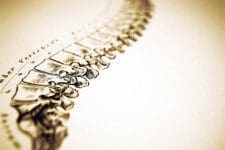Wellness
Clinic Wellness Team. A key factor to spine or back pain conditions is staying healthy. Overall wellness involves a balanced diet, appropriate exercise, physical activity, restful sleep, and a healthy lifestyle. The term has been applied in many ways. But overall, the definition is as follows.
It is a conscious, self-directed, and evolving process of achieving full potential. It is multidimensional, bringing together lifestyles both mental/spiritual and the environment in which one lives. It is positive and affirms that what we do is, in fact, correct.
It is an active process where people become aware and make choices towards a more successful lifestyle. This includes how a person contributes to their environment/community. They aim to build healthier living spaces and social networks. It helps in creating a person’s belief systems, values, and a positive world perspective.
Along with this comes the benefits of regular exercise, a healthy diet, personal self-care, and knowing when to seek medical attention. Dr. Jimenez’s message is to work towards being fit, being healthy, and staying aware of our collection of articles, blogs, and videos.

by Dr Alex Jimenez DC, APRN, FNP-BC, CFMP, IFMCP | Diets, Fitness
Schools won’t have to cut more salt from meals just yet and some will be able to serve kids fewer whole grains, under changes to federal nutrition standards announced Monday.
The move by President Donald Trump’s Agriculture Department partially rolls back rules championed by former first lady Michelle Obama as part of her healthy eating initiative. Separately, the Food and Drug Administration said on Monday it would delay � for one year � Obama administration rules that will require calorie labels on menus and prepared food displays. The rule was scheduled to go into effect later this week.
As his first major action in office, Agriculture Secretary Sonny Perdue said the Agriculture Department will delay an upcoming requirement to lower the amount of sodium in meals while continuing to allow waivers for regulations that all grains on the lunch line must be 50 percent whole grain.
Schools could also serve 1 percent flavored milk instead of the nonfat now required.
“If kids aren’t eating the food, and it’s ending up in the trash, they aren’t getting any nutrition � thus undermining the intent of the program,” said Perdue, who traveled to a school in Leesburg, Virginia, to make the announcement.
Health advocates who worked closely with the Obama administration on nutrition issues criticized the two moves, saying that the Trump administration is messing with rules that are popular with the public.
The menu labeling law would have required chain restaurants and other establishments that sell prepared foods to post the calorie content of food. The FDA said the delay “allows for further consideration” of ways to reduce costs or make the rules more flexible as supermarkets and pizza delivery companies have lobbied against it.
“The Trump administration is showing in two important ways that it puts business interests before its populist rhetoric on the campaign trail and what mainstream Americans want,” said Margo Wootan, a lobbyist for the Center for Science in the Public Interest.
The school meal changes reflect suggestions from the School Nutrition Association, which represents school nutrition directors and companies that sell food to schools. The group often battled with the Obama administration, which phased in the healthier school meal rules starting in 2012.
The Obama administration rules set fat, sugar and sodium limits on foods in the lunch line and beyond. Schools have long been required to follow government nutrition rules if they accept federal reimbursements for free and reduced-price meals for low-income students, but these standards were stricter. Obama pushed the changes as part of her “Let’s Move” campaign to combat childhood obesity.
The Trump administration changes leave most of the Obama administration’s school meal rules in place, including requirements that students must take fruits and vegetables on the lunch line. Some schools have asked for changes to that policy, saying students often throw them away.
But the health advocates who have championed the rules are concerned about the freeze in sodium levels, in particular. School lunches for elementary school students are now required to have less than 1,230 mg of sodium, a change put in place in 2014. The changes would keep the meals at that level, delaying until at least 2020 a requirement to lower sodium to 935 mg. That requirement was scheduled to begin in the 2017-2018 school year.
“By forgoing the next phase of sodium reduction, the Trump administration will be locking in dangerously high sodium levels in school lunch,” Wootan said.
Before he signed the proclamation, Perdue and Senate Agriculture Chairman Pat Roberts, R-Kan., ate chicken nuggets, fruit and salad with children at Catoctin Elementary. Perdue said he doesn’t see the changes as a rollback, but “we’re just slowing down the process.” He praised Obama’s nutrition efforts as first lady but said he wants the healthier meals to be more palatable.
He said the department will work on long-term solutions to further tweak the rules.
Becky Domokos-Bays, the nutrition director for Loudon County, Virginia, including Catoctin Elementary, said she has been experimenting with the lower sodium levels and she’s had a hard time adjusting some of the more popular foods she serves. Kids like her chicken noodle soup, she says, but rejected it when she lowered the sodium content because it was thinner and had less taste.
Perdue, a former governor of Georgia, said some schools in the South have had problems with grits, because “the whole grain variety has little black flakes in it” and kids won’t eat it.
“The school is compliant with the whole-grain requirements, but no one is eating the grits,” Perdue said. “That doesn’t make any sense.”
Others don’t want to see any changes to the healthier meals. Outside the school, Leesburg Mayor Kelly Burk and about 20 others protested ahead of the announcement. One sign read: “Sonny � Our children do not want big business soda, chips and fries!”
“Some people don’t like regulations, but these are important regulations that impact kids,” Burk said.

by Dr Alex Jimenez DC, APRN, FNP-BC, CFMP, IFMCP | Diets, Wellness
Doctor of Chiropractic, Dr. Alexander Jimenez takes a look at the latest diet drink with fiber.
COCA-COLA
Coca-Cola recently unveiled a new pop with the ingredient that�s sure to drop easily with its customers: dietary fiber.
The beverage firm introduced the product, which will be called Coca-Cola Plus. The soda is exclusively sold in Japan and features five grams of indigestible dextrin (which is a form of dietary fiber).
According to an announcement from Coke in February, the product is an integral part of Coca-Cola Japan�s Food of Specified Health Use (FOSHU) beverages. FOSHU beverages are intended to appeal to Japan�s health conscious consumers who are 40 and older. Coke, which has had a popular FOSHU tea beverage in the marketplace since 2014, said it took over a decade to research and develop Coke Plus, which was recently accepted by the Japanese government. If its � � claims that are healthy will actually do that much to help consumers, yet, individuals aren�t too certain.
�Drinking one Coca-Cola Plus per day with food may help suppress fat absorption after eating,� the firm asserted in a press release, and help moderate the levels of triglycerides in the blood.
Companies adding dietary fiber to its drinks is nothing new. Pepsi added beverages in its Japanese market a few years ago and dietary fiber and made similar claims about fat absorption and triglycerides that Coke did in the statement above.
�Unless Pepsi can provide data from controlled studies in humans to the contrary, their claim should be thought of as bogus and deceptive,� Walter Willett, Fredrick John Stare Professor of Epidemiology and Nutrition and chair of the Department of Nutrition at Harvard School of Public Health, told Time in 2012.
HuffPost reached out to Miriam E. Nelson, Ph.D, one of the state�s leading nutritionists and director of the Sustainability Institute at the University of New Hampshire, to talk about the inclusion of dietary fiber to pop.
�There isn’t any evidence that supplying fiber, scattering it in here or there, that that fiber has an entire health benefit, so that�s an important difference,� Nelson told HuffPost. �The evidence for dietary fiber having a health-promoting impact is with eating a routine of foods (such as fruits and vegetables and whole grains) that supply that fiber.�
Nelson said that adding the fiber won�t do anything harmful to the customer, but just adding the fiber by itself won�t have the well-being aspects a fiber-rich diet would offer. But she did find one part �disturbing� about the fiber claims.
“The companies are trying to add a positive halo or health attribute within a product which doesn�t have some health benefits,� Nelson said. If it�s a sugar-sweetened beverage afterward it truly has a lot of health benefits that are negative, so it�s trying to counterbalance that. That�s the disturbing part, since I believe they�re trying to link with the consumer and develop a health aspect where there isn�t one.�
If You Need To Incorporate More Fiber Into Your Daily Diet, Do It With Whole Grains, Fruits & Veggies

by Dr Alex Jimenez DC, APRN, FNP-BC, CFMP, IFMCP | Diets, Health, Nutrition
This article originally appeared on Time.com.�
Energy drinks are known for their high caffeine content, which often tops that of soda and even coffee. But they seem to affect people�s hearts and blood pressure differently than other caffeinated beverages, suggests a small new study published in the Journal of the American Heart Association.
In the study, researchers divided 18 men and women into two groups. Half were given a 32-ounce commercially available energy drink with 320 mg of caffeine, as well as other ingredients like taurine and ginseng (both dietary supplements). People in the other group were given a soda-like control drink of the same size that contained the same amount of caffeine with a bit of lime juice, cherry syrup and carbonated water. After six days, the groups switched and drank the other beverage.
The researchers measured everyone�s blood pressure at the start of the study and one, two, four, six and 24 hours after drinking the beverage. They also measured everyone�s heart activity using an electrocardiogram.
People who drank the energy drinks had a QT interval�meaning the time it takes the heart�s ventricles to prepare to beat again�10-milliseconds higher than those who drank the caffeinated control beverages. Irregularity in the QT interval can sometimes lead to abnormal heart beats. Fletcher says that the disparity may be important, since some medications that affect the QT interval by 6 milliseconds carry warning labels.
RELATED:�Fergie and Josh Duhamel Swear by This Power Smoothie for All-Day Energy
Both groups had higher blood pressure after their drinks, though never out of normal range. The blood pressure of people who had the control drink returned to baseline levels after six hours. But when people drank the energy beverage, their blood pressure remained elevated for more than six hours. The researchers believe that could mean that the other ingredients in energy drinks may alter blood pressure beyond the effects of caffeine alone.
�What the growing body of evidence is pointing to is that there are effects on the heart that are different than caffeine alone,� says study author Emily Fletcher, a deputy pharmacy flight commander from David Grant U.S.A.F. Medical Center at Travis Air Force Base in California. �Consumers should be aware that drinking an energy drink is not the same as drinking coffee or soda.�
More research is needed. The study was small, and researchers only looked at the effects of the beverages on people who were healthy�and not at the differences over the long term. The American Beverage Association, which represents the non-alcoholic beverage industry, said in a statement that �energy drinks have been extensively studied and confirmed safe for consumption by government safety authorities worldwide including a recent review by the European Food Safety Authority.�
Fletcher says that the findings suggest people should approach energy drinks with some caution, especially those who have risk factors for heart issues. �I would recommend only moderate consumption of energy drinks and particular avoidance in people with underlying cardiac disease or hypertension,� says Fletcher, �or during activities that would also increase your blood pressure and heart rate, such as exercise or sports.�

by Dr Alex Jimenez DC, APRN, FNP-BC, CFMP, IFMCP | Chronic Back Pain, Mind Body and Spirit, Wellness
Doctor of Chiropractic, Dr. Alexander Jimenez looks into Tai Chi for back pain.
Q&A with Tai Chi Specialist Dr. Paul Lam
While lots of people take a �no pain, no increase� approach to work out, that�s for handling back and neck pain not always safe or effective. That�s where tai chi comes in. This low-impact, slow moving form of exercise delivers results without the sweat and soreness. Though it�s tender and meditative tai chi promotes strength, flexibility, and balance�the trifecta to get a healthier spine.
In case you have back or neck pain�or you�re looking for methods to prevent it in the first place �tai chi may be worth investigating. To help answer common questions and shed light on lesser-known facts relating to this ancient Chinese mind and body practice, we reached out to Dr. Paul Lam, manager of the Tai Chi for Health Institute in Australia.

Tai Chi Can Help
Q: During your research, what has become the most insightful finding you�ve found about tai chi as it relates to back pain?
A: The most insightful finding in my research concerning tai chi involved the mental impact and the deep stabilizer muscles to back pain.
Ninety percent of men and women have back pain at some period in their own lives, and more than 60 percent of that is continual. I discovered that nearly all individuals with back pain, no matter what the cause, have poor stabilizer muscles. Research has shown that strong stabilizers will prevent back pain and hasten healing.
Reinforcing the stabilizer muscles that are back is quite similar to tai chi training. The main element is an erect pose, exercising the stabilizers through the pelvic floor along with the transverse abdominus muscles, and using abdominal breathing. This really is among the important reasons why tai chi works so well for back pain.
One other insight I�ve discovered involves your head. Anxiety makes pain worse. Oftentimes with the continuing and persistent back pain, the cause of the pain might have gone, but the pain continues. Like a phantom pain, the thoughts�s ingrained custom proceeds to provide pain signals to the brain. Tai chi trains body and the mind, making both integrated and more powerful. It is but one of the utmost effective tools to greatly help with the mental aspects of back pain.
Q: What�s your best advice for somebody who’s apprehensive about beginning tai chi?
A: The reason why they are apprehensive about beginning tai chi, it depends. I can guarantee them it is safe, simple to understand, and proven effective, if people believe tai chi is a martial art and might be overly hard to learn. Millions of people around the globe have learned and profited from it, although the other consideration is the fact that individuals might believe tai chi is too tough to learn.
Q: How do individuals get the most?
A: I advocate people to practice tai chi for 30�40 minutes daily (it may be performed in separate sittings) most days each week. You will gain significant improvement in your quality of life and relief from back pain.
Q: Do you have some success stories that are personal which you can share regarding the benefits of tai chi for back pain?
A: Thousands! But to pick on only one, I�ve comprised a letter below written by a woman named Amatullah from Saudi Arabia.
“In 2009, I ‘d back pain for quite a while. Nothing worked, although I attempted many types of therapy. My friend said, �Try tai chi, it’s a gentle exercise.� Because my back was sore, I refused at first, but I attempted it. It was really surprising to me how people from 35 to 80 years old could do the movements, when I couldn�t. I found to be able to steadfastly keep up their health, some of them had been practicing for up to 35 years. I understood they were much fitter and much more flexible than my parents, therefore I decided to learn it. I practiced in all weather, in the park every day. My back pain vanished and has never return.”
Q: Are there tai chi resources you can recommend?
A: Yes, the Tai Chi for Health Institute web site has many resources, including a summary of accredited educators around the planet.

Call Today!

by Dr Alex Jimenez DC, APRN, FNP-BC, CFMP, IFMCP | Chiropractic, Spinal Hygiene, Wellness
El Paso, TX. Chiropractor Dr. Alex Jimenez takes a look at chiropractors and�how they can act as an antioxidant through their practice.
The practice of chiropractic truly works on the grounds the work removes blockages to the body�s natural health and healing abilities, although most folks link chiropractors with pain management. This consists of removing pressure from nerves that relay signals from the brain to the organs and systems of the body.

Chiropractic Care Benefits
In 2005, a landmark study published in the Journal of Vertebral Subluxation (JVSR) found evidence that chiropractic care can reduce oxidative stress within the body.
Oxidative stress is the damage occurring when free radicals outnumber the body�s antioxidants. Oxidative stress damages all body cell components: lipids, proteins and DNA.
Oxidative stress plays a job in a whole host of diseases and ailments: Alzheimer�s rheumatoid arthritis, atherosclerosis, chronic fatigue syndrome, diabetes, heart problems, Parkinson�s disease, disease and many others.
Thiols are compounds within the body that act as antioxidants, reacting with free radicals to neutralize them. Serum amounts of thiols report scientists of Biomedical Diagnostic Research, Inc reflect DNA�s ability to mend itself, and can be used to measure aging and disease status.
In a 2003 study published in the Journal of Anti Aging Medicine, the scientists found low serum thiol levels with nine distinct categories of disorder and human disease in people.
The study published in JVSR consisted of 76 participants: one group received short-term chiropractic care; a second group received long term chiropractic care; and the 3rd group received no chiropractic care.
After qualifying for age, gender as well as the usage of nutritional supplements, the participants that received chiropractic care for 2 or more years that were healthy had higher serum thiol levels than people that have disorder. Some of the chiropractic patients had serum thiol levels higher than what is linked with wellness that is ordinary.
Chiropractor Dr. Christopher Kent explained: �Oxidative tension, metabolically creating free radicals, is a broadly accepted theory of how we age and grow ailment.�
�Going through life,� we experience chemical, physical and psychological stress. These pressures change the function of the body’s nervous system. We hypothesized that oxidative stress could affect and DNA repair on a cellular level.�
�Chiropractic care seems to improve the power of the entire body to adapt to anxiety,� concluded Kent.

Call Today!
Sources
Medical News Today (2005)
Journal of Anti-Aging Medicine (2003)
Medical News Today (2010)

by Dr Alex Jimenez DC, APRN, FNP-BC, CFMP, IFMCP | Fitness, Health, Wellness
If you�ve never taken a yoga class before, the numerous poses can be pretty intimidating. Downward facing dog, crow pose, cat and cow, wheel, warrior, the list goes on. And if your first experience is in an overflowing class, the instructor likely won�t have a chance to make sure you�re perfectly positioned in each posture.
Granted, yoga is all about going with what feels right for your body. But doing certain poses incorrectly can lead to muscle imbalances and possibly even injuries down the road. And it�s important to note that newbie yogis aren�t the only ones susceptible to mistakes. Even if you�ve been practicing yoga for years, there�may be room for improvement.
RELATED: Easy Fixes to Yoga Poses to Protect Your Knees, Neck, and Wrists
In this video, yoga instructor Kirby Koo demonstrates four common yoga form mistakes, plus how to correct them.
No time to watch? Here are some quick fixes for each pose:
Downward facing dog
The problem: Hunched shoulders.
The fix: Draw shoulders away from ears, outwardly rotate arms.
Plank
The problem: �Bat wing� shoulder blades.
The fix: Draw shoulder blades apart, broaden through collar bones.
Upward facing dog
The problem: Head tipped too far back, crunching lower back.
The fix: Lower chin, draw shoulders away from ears, lift thighs off the ground.
Cow
The problem: Crunching back of neck, �bat wing� shoulder blades.
The fix: Draw shoulder blades apart, bring sternum forward.

by Dr Alex Jimenez DC, APRN, FNP-BC, CFMP, IFMCP | Fitness, Health, Wellness
Watch this video and follow along as celebrity instructor and Health contributing editor Kristin McGee guides a 10-minute Pilates workout that�s perfect for beginners and pros alike.
During this sequence, McGee focuses on targeting your abs, especially the transverse abdominals, the deepest layer of muscle in your core. According to McGee, we should lead all of our daily activities from those muscles. They support us, give us good posture, and help us with twisting and movement. Plus, that deep transverse core muscle is what helps make your spine nice and long.
RELATED: 3 Exercises for a Stronger Pelvic Floor (and Lower Abs)
As you do this workout, there are a few crucial things to keep in mind. For starters, tune into your body, and really try to feel the connection both to your pelvic floor muscles and to your transverse abdominals. McGee suggests imagining you�re wearing a wetsuit, and it�s pulling everything in your torso inward.
While your core and pelvic floor should feel tight and engaged, be sure to keep your shoulders soft. It also helps to maintain a slight �C curve� in your spine, which allows your lower abs to be pulled even farther in, helping to activate and tone them.
Finally, use your breath to connect to your pelvic floor muscles and scoop in your abs as you go through each move.
Some of the moves may seem really subtle and simple�but don�t be fooled! This sequence is sure to have your abs aching the next day, in the best kind of way.

















